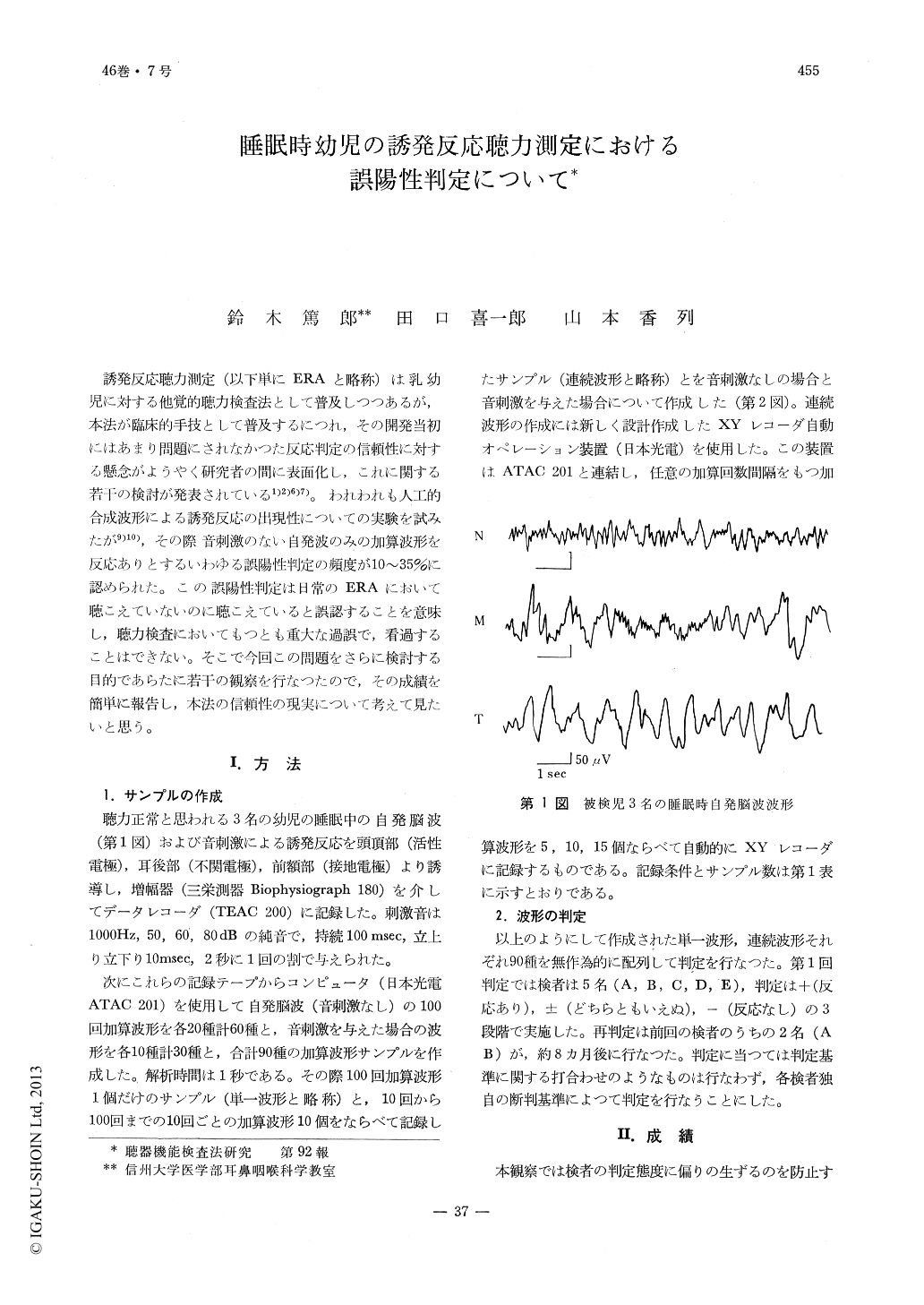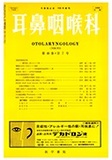Japanese
English
- 有料閲覧
- Abstract 文献概要
- 1ページ目 Look Inside
誘発反応聴力測定(以下単にERAと略称)は乳幼児に対する他覚的聴力検査法として普及しつつあるが,本法が臨床的手技として普及するにつれ,その開発当初にはあまり問題にされなかつた反応判定の信頼性に対する懸念がようやく研究者の間に表面化し,これに関する若干の検討が発表されている1)2)6)7)。われわれも人工的合成波形による誘発反応の出現性についての実験を試みたが9)10),その際音刺激のない自発波のみの加算波形を反応ありとするいわゆる誤陽性判定の頻度が10〜35%に認められた。この誤陽性判定は日常のERAにおいて聴こえていないのに聴こえていると誤認することを意味し,聴力検査においてもつとも重大な過誤で,看過することはできない。そこで今回この問題をさらに検討する目的であらたに若干の観察を行なつたので,その成績を簡単に報告し,本法の信頼性の現実について考えて見たいと思う。
In order to find the rate of occurrence of making false positive decisions in evaluating the results of evoked response audiometry, spontaneous EEG activity of three sleeping infants were taken and summated through the computer for 100 times. The wave patterns so obtained were presented to five individual scorers for their conclusive opinion. The rate for deriving at a false positive decision differed upon the depth of sleep with which the infant was found; the rate was smaller in a light sleep as when compared to the deep (6.0% vs. 21.5%). It was also found that this rate differed with different individual scorer which ranged from 10.8% to 25%. This rate was also put to test with the same individual scorer under similar conditions 8 months after the making of the first. The results of the second test in agreement with first were 67.5% to 85%.
From the results of these test the authors come to a conclusion that in determining the hearing threshold among infants by means of evoked response audiometry is, at best, a procedure that require a deep precaution in its interpretation.

Copyright © 1974, Igaku-Shoin Ltd. All rights reserved.


